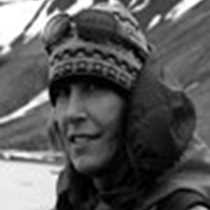The wash of spring color in a Southeast Alaskan seaside field can be dazzling. Today, yellow buttercups, purple violets, and magenta shooting stars glowed in new green growth—even a few copper-brown chocolate lilies had at last unfurled their bells. The pollination strategies of these early-season lovelies are nearly as fascinating as their flowers are beautiful. Take the dwarf dogwood, fastest plant on the planet, for example. Or consider the chocolate lily’s foul aroma, delightful to eager flies. And what about the shooting star, which relies upon the sound waves of buzzing bees to knock its pollen loose? All surprise in their details, which is true of so many things once we begin to examine them.
Today, we woke up to an early announcement: whales. A mother and calf humpback were hugging the shore of Peril Strait, the calf with a great deal of splashing and cavorting. It was slapping its white pectoral flippers down on the water’s surface, lobbing its tail, breaching once or twice, and generally having a good time. We, standing on deck in the rain, delighted and a bit damp, decided to adopt its spirit for the day.
Our morning was spent ashore and in kayaks exploring Hanus Bay and the Lake Eva trail. Boot-sucking mud managed to dislodge only one boot, and we were glad to walk among the calls of varied thrushes and Townsend’s warblers. Kayakers paddled upriver and toward the falls, passing through a swarm of tree swallows that were plucking bugs from just above the water. To have a swallow buzz your head while in a small boat is a fairly uncommon and unforgettable experience. Even under gray clouds, their blue backs glinted in the light.
We left our anchorage and headed north in Chatham Strait. Our guest lecturer, Doris Sloan, shed light on the complicated geology we were sailing through, and a lone humpback brought us up on deck once more before dinner. We cruise north now toward Icy Strait and new discoveries.




